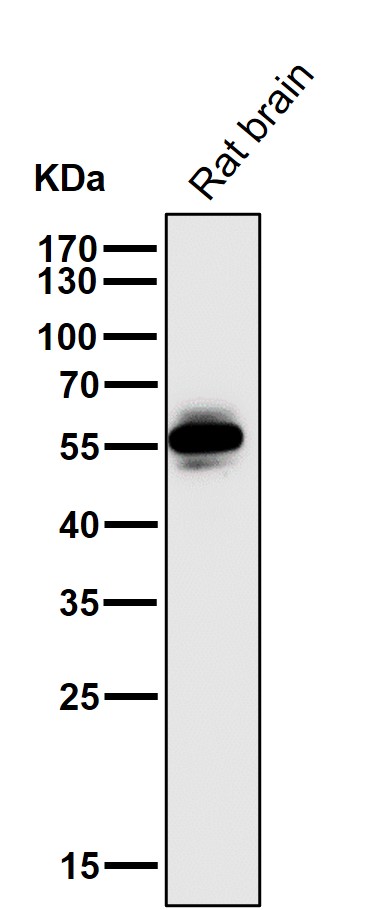
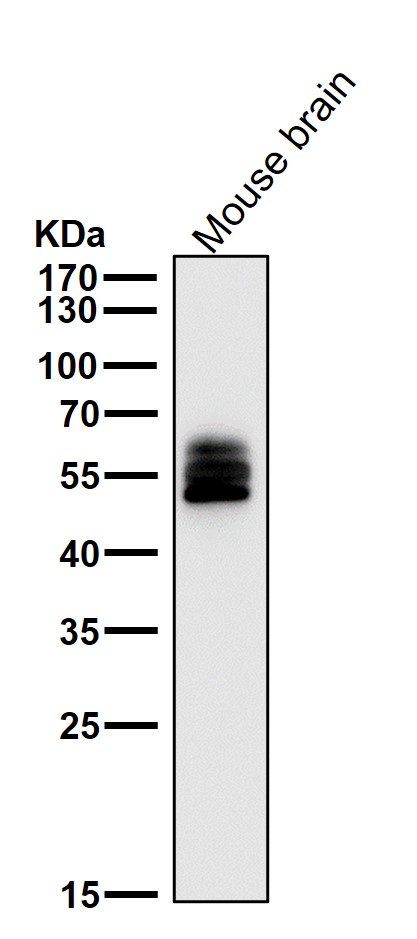
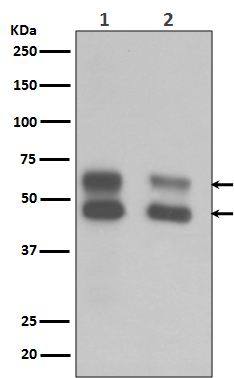
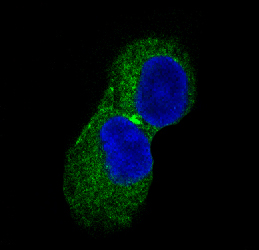
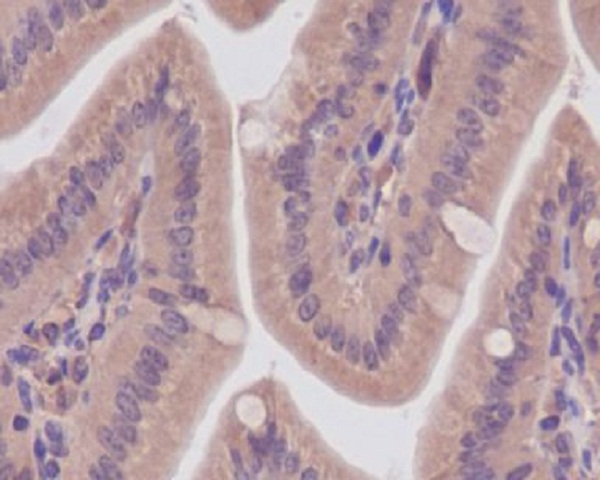
| WB | 咨询技术 | Human,Mouse,Rat |
| IF | 咨询技术 | Human,Mouse,Rat |
| IHC | IHC:1/100-1/200;IHF:1/50-1/200 | Human,Mouse,Rat |
| ICC | 1/50-1/200 | Human,Mouse,Rat |
| FCM | 咨询技术 | Human,Mouse,Rat |
| Elisa | 咨询技术 | Human,Mouse,Rat |
| Aliases | CAMK2; Camk2a; CAMK2B; CAMK2D; CAMK2G; CAMKA;;pan CaMKII |
| WB Predicted band size | Calculated MW: 54-73 kDa ; Observed MW: 45,54,60 kDa |
| Host/Isotype | Rabbit IgG |
| Antibody Type | Primary antibody |
| Storage | Store at 4°C short term. Aliquot and store at -20°C long term. Avoid freeze/thaw cycles. |
| Species Reactivity | Human,Mouse,Rat |
| Immunogen | A synthesized peptide derived from human CaMKII alpha |
| Formulation | Purified antibody in PBS with 0.05% sodium azide,0.05% BSA and 50% glycerol. |
+ +
以下是关于CaMKII抗体的3-4篇参考文献的简要概括(信息基于公开研究,可能存在简化或年份误差,建议核实原文):
---
1. **文献名称**:*"Characterization of a CaMKIIα/β isoform-specific monoclonal antibody"*
**作者**:Schwarzer C. et al.
**摘要**:该研究开发并验证了一种针对CaMKIIα和β亚型的特异性单克隆抗体,通过免疫印迹和免疫组化实验证明其在不同脑区中的选择性识别能力,为神经信号通路研究提供工具。
2. **文献名称**:*"CaMKIIδ antibody validation in cardiac hypertrophy models"*
**作者**:Hudmon A. & Anderson M.E.
**摘要**:文章系统验证了多种商品化CaMKIIδ抗体在心脏组织中的应用,比较其特异性及交叉反应性,发现部分抗体存在非特异性结合,强调了抗体选择对心肌肥厚机制研究的重要性。
3. **文献名称**:*"Antibody-based inhibition of CaMKII activity alters synaptic plasticity in hippocampus"*
**作者**:Lüscher C. et al.
**摘要**:通过显微注射CaMKII抗体阻断其激酶活性,发现海马区长期增强(LTP)显著受损,证实CaMKII在突触可塑性中的核心作用,并探讨抗体干预对学习记忆的影响。
4. **文献名称**:*"Generation of CaMKII knockout mice and antibody validation"*
**作者**:Elgersma Y. & Giese K.P.
**摘要**:研究利用CaMKII基因敲除小鼠模型,结合多种抗体验证蛋白表达缺失,确认了抗体在体内外实验中的可靠性,为行为学与分子机制关联研究奠定基础。
---
建议通过PubMed或Google Scholar检索具体文献,并参考近年研究更新抗体应用进展。
CaMKII (Calcium/Calmodulin-dependent Protein Kinase II) antibodies are essential tools in neuroscience and cardiovascular research, targeting a multifunctional serine/threonine kinase critical for synaptic plasticity, memory formation, and cardiac function. CaMKII is activated by calcium influx, which triggers its binding to calmodulin, leading to autophosphorylation at Thr286 (α-isoform) or Thr287 (β, γ, δ-isoforms). This modification sustains kinase activity even after calcium levels drop, enabling long-term signaling. Structurally, CaMKII forms a dodecameric holoenzyme composed of homologous subunits (α, β, γ, δ), with tissue-specific expression—α and β dominate in the brain, while δ is prominent in the heart.
Antibodies against CaMKII are widely used to study its expression, localization, and activation states. Phospho-specific antibodies targeting autophosphorylation sites (e.g., Thr286/287) help assess kinase activation in conditions like long-term potentiation (LTP), heart failure, or arrhythmias. These antibodies are applied in techniques such as Western blotting, immunohistochemistry, and immunofluorescence. Challenges include cross-reactivity due to high homology among isoforms, necessitating rigorous validation via knockout controls or isoform-specific assays.
Research areas leveraging CaMKII antibodies range from neurodegenerative diseases (e.g., Alzheimer’s) to cardiac hypertrophy, underscoring its role in cellular signaling. Recent studies also explore its non-catalytic functions in structural scaffolding. Monoclonal antibodies offer consistency, while polyclonal ones may detect broader epitopes. Proper experimental design requires matching antibody specificity to the target isoform and post-translational modification, ensuring accurate interpretation of CaMKII's complex roles in health and disease.
×